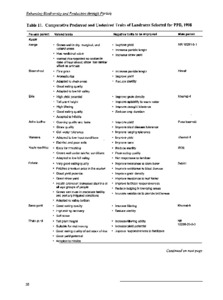The impact of participatory plant breeding (PPB) on landrace diversity: A case study for high-altitude rice in Nepal
Participatory plant breeding (PPB) methods were used to develop two farmer-accepted, cold-tolerant rice varieties in Nepal â?? Machhapuchhre-3 (M-3) and Machhapuchhre-9 (M-9). Both were derived from the cross Fuji 102/Chhomrong Dhan. Following the introduction of these varieties, the changes in the rice landraces and varieties that farmers grew were studied in ten villages. In seven of them for which data were analysed for both 1996 and 1999, adopting farmers grew 18 landraces and four modern varieties of which three, M-3, M-9 and Lumle-2, were the products of PPB. These three varieties covered 10% of the total rice area and 33% of the rice area of the adopting farmers in the seven study villages in the 1999 survey. The adoption of the PPB varieties impacted most on the more commonly grown landraces. With the exception of two villages, the varietal richness among adopting farmers was either static or increased, and there was an overall increase in allelic diversity. However, in future, the increasing adoption of M-3 and M-9 could result in significant reductions in varietal richness, although, allelic diversity may not be greatly reduced

